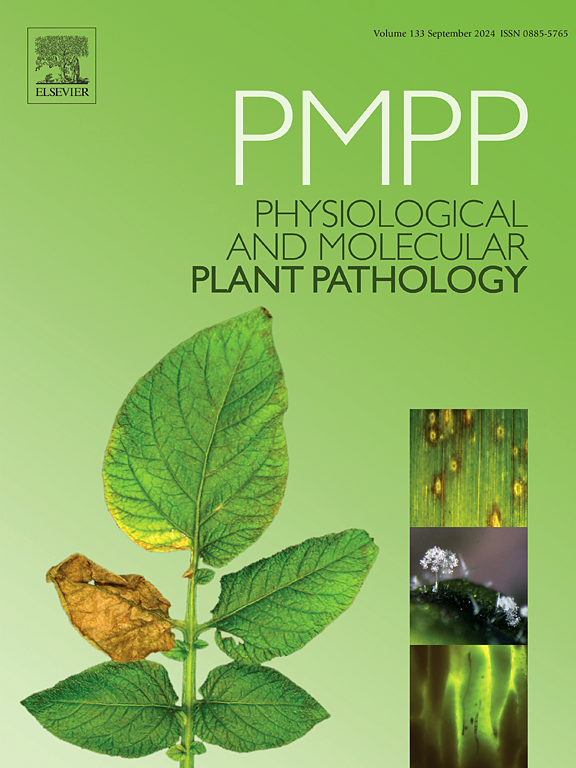Selection of suitable reference gene for gene expression studies in maize-downy mildew pathosystem
IF 2.8
3区 农林科学
Q2 PLANT SCIENCES
引用次数: 0
Abstract
Maize is the Philippines' second most valuable staple crop based on overall value and total area planted. Local maize production is hampered by the Philippine downy mildew (DM) disease caused by the pathogen Peronosclerospora philippinensis (Weston) Shaw, causing substantial losses annually. Several studies have already reported and proposed candidate DM-resistance genes that may help maize suppress the progression and effects of DM. Nevertheless, the roles of these genes need to be validated further in terms of their effect on DM resistance. One of the most crucial steps in validating gene expression analysis is the identification of suitable and stable reference genes to be used as internal controls in such experiments. Hence, this study assessed the suitability of 10 genes (α-TUB, β-TUB, 18S, 25S, ACT1, CUL, FPGS, MEP, UBI, and UBCP) to be used as reference genes in gene expression analysis studies in maize-downy mildew pathosystem. RNA extraction, complementary DNA (cDNA) synthesis, and quantitative real-time polymerase chain reaction (RT-qPCR) of mock- and DM-infected, DM-susceptible (Pi23) and DM-resistant maize (CML431) were performed. Analysis of the Cq values of the genes using statistical measures of variability identified CUL and UBI to be the most stable reference genes. However, based on the comprehensive ranking of RefFinder, MEP was the most stable reference gene. Thus, MEP will be used for the subsequent validation of candidate DM-resistance and DM-susceptibility factors in response to DM infection in maize.
求助全文
约1分钟内获得全文
求助全文
来源期刊
CiteScore
4.30
自引率
7.40%
发文量
130
审稿时长
38 days
期刊介绍:
Physiological and Molecular Plant Pathology provides an International forum for original research papers, reviews, and commentaries on all aspects of the molecular biology, biochemistry, physiology, histology and cytology, genetics and evolution of plant-microbe interactions.
Papers on all kinds of infective pathogen, including viruses, prokaryotes, fungi, and nematodes, as well as mutualistic organisms such as Rhizobium and mycorrhyzal fungi, are acceptable as long as they have a bearing on the interaction between pathogen and plant.

 求助内容:
求助内容: 应助结果提醒方式:
应助结果提醒方式:


